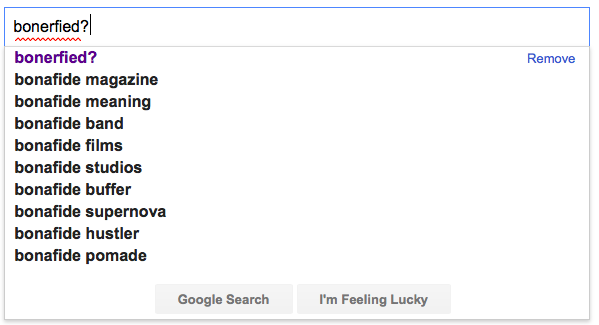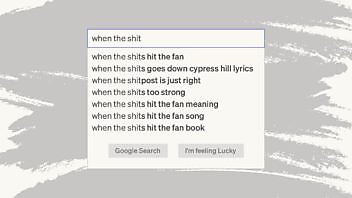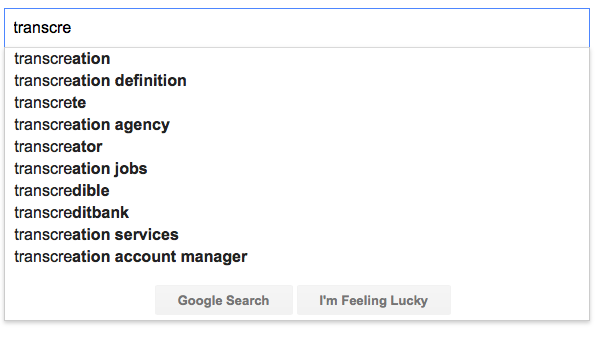For great creative, standard translations are bad. A heartfelt plea, from someone who gives a shit, to cough up that little bit extra for a proper transcreation job.
At Velocity, we’re lucky. Our clients love content.
We’re even luckier because they come to us specifically for the attitude, momentum, tone of voice (and occasional swearing) that we try to inject into the pieces we create for them.
And we make sure they know that we’re really precious about tone of voice.
Never for its own sake, but to make a point. To be authentic. If you speak a truth, and speak it well, you can win an audience. That’s why we’ll always fight for our conviction that an intelligent, strong point of view and confident, non-dead language (with or without swearing) will trump a vanilla attitude and soft-play marketing speak. Most of our clients agree. It’s the product they pay us for.
Here’s another reason we’re lucky: when we work with global businesses, sometimes we see our content translated into languages other than English. It’s très cool. It’s also where the shit often hits the linguistic fan called standard translation work. I’ll explain what that means in a second. But first, here’s why it matters so much:
Great language makes ideas stick.
As a bona fide word nerd, I love that if you use language in an unexpected way, you can do amazing things: put ideas into people’s minds, create connections, whack them over the head. And as a bi-lingual copywriter, I’m privileged because I get to discover words like a kid discovers a new toy. When I hear a new expression, my first reaction is “This is great. I’m going to use it”. And then I sneak it into my next ebook, slideshare, or blog post.
With some words or idioms, I even remember where I first heard them. For example, about ten years ago, I burst out laughing at a flea market in Sydney, Australia when my friend said “That’s when the shit hit the fan” (see above). I’d never heard it before. What a fantastic image! I love witty abstraction, but there’s nothing like a fecal visual to drive a point home. As for “bona-fide” (see elsewhere, above), it’ll always stick in my mind because D.F. Wallace has one of the characters in his novel Infinite Jest use it in an interior monologue. This character’s a guy who for no apparent reason thinks he’s a lot smarter than everyone else. But in his mind, it’s spelled “bonerfied”. Brilliant.

Fresh, creative language does things like that all the time. It makes us see the world differently. It creates nuance, and new feels, and looks, and arguments. These things – and strong ideas – are the main ingredients of valuable content. They make your pieces different, readable, and exciting. That’s what we’re trying to get right every day: the right ideas and the right words to craft tight B2B marketing copy we’re not ashamed of. (And if I sound too much up my own arse here – the emphasis is on ‘trying’).
Your content has a job to do – in every language you publish it
Sometimes it happens that our clients are not too ashamed of it either, and they choose to have our work translated for their global markets. And as a bi-lingual lover of writing, I’ve seen that more often than not, despite all the best intentions, the quality of that work is nowhere near the original. It’s often a little awkward. Sometimes trying too hard on the personality, sometimes not hard enough. Missing the point. A little naff maybe. And often boring.
This is important – not just for the words-obsessed or bi-linguals. It’s important for everyone who cares about the quality of their content and the job it’s got to do – whether that’s convincing, selling, inspiring, educating, polarizing or whatever.
And you don’t have to be a word geek to get it. It’s enough to remember any slightly-off translation work you’ve ever come across – like maybe an instruction manual that wasn’t completely useless in helping you put the shelf up, but it was clunky and required a lot of effort to figure out. That’s what a lot of translated content marketing pieces read like: not entirely wrong, but slightly off. And definitely not doing their job as well as they should.
The truth is: translated content hardly ever has the power of the original.
Why does that happen? It’s certainly not because our clients are using terrible translators. Or because what we write is so unique it’s untranslateable. It’s because
- It’s hard. Tone of voice isn’t easy to get right in any one language. But it’s one of the most difficult things to replicate in another.
- It needs to be in the briefing. Translators need guidance as to how the piece should sound and what it should achieve – but they’re often paid by the word, work under enormous time pressure and aren’t given any context.
- It takes a pro. Translators aren’t copywriters. Their job training emphasises precision, staying true to the text, and using the right idioms. These things are important for other kinds of texts, but creative translation needs to do more: not just say the same things, but create the same mood, the same look and feel; be just as witty, or intelligent, but be it in another cultural context.
In other words: re-creating tone of voice in another language takes money, time, and talent.
Anybody in charge of how their marketing performs needs to be aware of that. And know that it’s worth it – because the cost of not investing in these things is that you void all your previous hard efforts to create a kick-ass piece of content:
- If you’re doing an international content marketing program, you’re probably pretty big, revenue-wise (which means you want a consistent brand voice, across the globe). Or, if you’re small, getting into a specific market is a top priority for you.
- You’re committed to the idea that content marketing is the way forward and the best way for you to create leads, demonstrate thought leadership and stand out from the crowd. You’ve probably also got a dedicated content marketing budget – which is only a part of your overall marketing budget. And if there’s budget, it matters to somebody high up (and comes with a responsibility to demonstrate value).
- You’ve gone through the process of shortlisting content marketing agencies, maybe had them pitch, and have decided on the right one (let’s say, for instance, us).
- You’ve signed off on a strategic positioning.
- We’ve talked about promotion and nurture programs.
- You’ve gone with one of our content recommendations.
- We’ve had input calls with your people, and got them to tell us what we need to create a strong piece.
- We’ve written the piece and it went through your approval process: brand, product, marketing (and their dog) made sure they’re happy, that it says exactly what you want it to say, and in exactly the right tone of voice.
- Then the piece goes into design and we do the same thing again to make sure it absolutely looks right, too.
- And then, when you’ve really done everything you could possibly do to get this right, you just throw it over the wall to a non-specialised translator, who doesn’t know anything about why the piece says what it says, reads how it reads, and looks the way it looks? Who knows nothing about your goals, your target personas, how your competitors sound? Whose prime metric is number of words translated?
That’s plain crazy. It’s undermining the very goal you set out to achieve. Because I can almost certainly promise the result will be a lot less fun or interesting to read. It may not be awful – but it won’t be the level of excellence you’ve aimed for.
So here’s what I’m asking:
Will you please, please, next time you have a piece of marketing communication translated, consider giving it to a transcreation agency that’s specialised in getting creative messages across to other cultures?
Yes. It’ll cost you a little more than a standard translation job. But if you care about your content, these things matter:
- They’ve got pros. They’ll work with linguists, proofreaders and editors who are also copywriters who get writing styles and tone of voice.
- They care about your goals. They’ll push and prod you until you give them all the background they need to understand what the piece is for.
- They do more than the words. They can make sure your design works in the other language, too – by avoiding awkward line breaks, images that might work in your culture but offend in another, and lots of other things, from fonts to color choices.
Don’t do it for me, or for the fat lady. Do it out of respect to your reader. And do it so when you make the effort to present your content to another market, it’ll genuinely rock. Not wobble.

Enjoyed this article?
Take part in the discussion









Comments
Sarah Mitchell Lush Digital Media May 12th, 2016
Hi Irene,
Lot’s of ‘yeps’ and head nodding on my end while reading this post. I would add one other part to your comprehensive analysis. Localisation is vitally important, especially when you cross cultural boundaries regardless of whether translation is required. As someone fluent in English, Australian and American, I can tell you there’s significant difference in how you communicate in each language. Any agency worth their salt will ensure they have measures in place to ensure they don’t get caught in the ‘two countries separated by a common language’ trap. The football/soccer /footy example is well-known but what about spellings like tire/tyre? As you say, it all goes back to respect for the reader and creating trust for your brand.
Irene Triendl May 12th, 2016
Thanks, Sarah! I guess it all comes down to not making your reader stumble across words or ideas that don’t feel quite right.
Bill Maslen The Word Gym November 16th, 2016
As providers of precisely this kind of creative translation service, I thought this was an excellent article. For your readers’ info (and not just to blow our own horn/trumpet/tuba/wind instrument of choice!), it’s worth bearing in mind that there aren’t very many “transcreation” specialists out there, although there are plenty of large translation companies who claim to have the expertise. The reason? Because transcreation is as difficult and painstaking as Irene describes above. You’re trying to do a copywriter’s job, but almost always within constraints that a copywriter has already established (in close consultation with the client). So what you do is already limited by decisions that are more or less set in stone, but may not have been based on any cultural/linguistic/idiomatic considerations – especially of other target markets – at all, especially in the B2B space.
As Irene says, a good transcreation specialist will write a special brief on the source copy (original text) describing, at the very least, (a) a breakdown of the target audience, (b) an analysis of how the copy should impact said target audience – i.e. what is it intended to achieve – and (c) what methods are being used to create this impact. This way, the translation teams (yes, notice I said “teams”) can decide on the most appropriate way to recreate said impact in the target markets/cultures.
And in defence of regular translation companies, you’d be amazed how few marcomms companies write proper creative and/or copy briefs in the first place! Which is why we now almost always work directly with the corporates themselves.
Very nice analysis. I enjoyed it, and I’m recommending it to colleagues!
Natalie Soper Bellingua Translations November 17th, 2016
Hahaha, I love how you write! Even better when what you’re saying is spot on! Copywriting is tough enough in one language – trying to put it into another language, while keeping the ‘feel’ of the original, takes a lot of work and talent and certainly can’t be done overnight. And why wouldn’t businesses want to view translation as an investment? After all, you don’t want to look silly in front od the million of new people who will see your content!